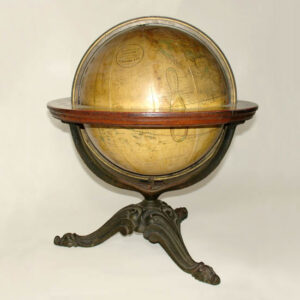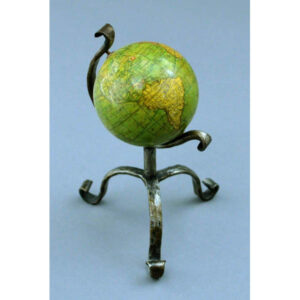Description
The hourglass is generally set within a stand with disc shaped ends between three or four supports. The supports also protect the hourglass against breakage. Stands are made from a variety of materials including turned wood; metals such as brass, pewter, silver or copper; and marble or alabaster. Some stands allow for the hourglass to be hung, while others allow the glass to be revolved within the stand. Some revolving stands incorporate a bell: when the sand runs out of the top, the glass inverts itself due to the shift in weight, ringing the bell.
Hourglasses were made in a large variety of sizes — typically from an inch or two, up to about 30 inches high. The sand is usually white and the glass clear, but colored sands or glass were frequently used. Often antique hourglasses are timed for an hour (a “true” hourglass) or a half-hour. Some marine sandglasses lasted as much as four hours, or came in sets of different durations mounted in a single frame. Small hourglasses were frequently used in the 20th century to time hard boiled eggs (three minutes) or as game timers. There are many other variations of time calibrations for extant hourglasses.
The invention of the hourglass is attributed to an 8th-century monk in Chartres, France, with the marine sandglass appearing as early as the 14th century. In earlier examples the bulbs were connected with a material such as putty or a hardened wax, bound in leather, linen or string. From about 1720, the two bulbs were welded together over a brass bead drilled with a hole, often still bound in leather. From around 1760, the glass was blown in one piece (with the sand inserted in the cooled end before sealing it). Ships would use the glasses to measure time at sea on a given navigational course. The invention of clocks and watches largely superseded the practical need for hourglasses.
References:
“Marine Sandglass.” Wikipedia. 26 March 2015. http://en.wikipedia.org/wiki/Marine_sandglass (24 April 2014).
Pope-Hennessey, John et al. The Encyclopedia of Antiques. New York: Greenwich House, 1982. p. 298.






